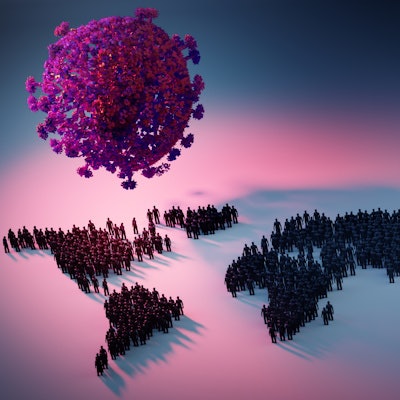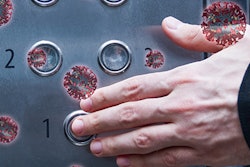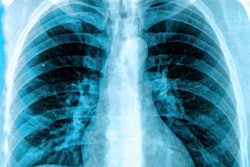
As the radiology community deals with the COVID-19 pandemic, imaging providers are using ingenuity to create novel shift rotations, make the best use of personal protective equipment, and segregate teams to protect valuable staff members and patients to slow the spread of the novel coronavirus.
During a global virtual roundtable on April 15 organized by the International Society for Magnetic Resonance in Medicine (ISMRM) and the Society for MR Radiographers and Technologists (SMRT), radiologists and operations managers came together to share with each other their successes and recommendations in dealing with COVID-19.
While radiology practices around the world differ, the underlying principles in responding to an outbreak like COVID-19 remain relevant and can be applied widely, according to Dr. Yong Geng Goh, associate consultant at National University Hospital in Singapore.
COVID-19 happens
The SARS-CoV-2 virus can be transmitted from droplets when an infected person coughs, sneezes, or speaks. Viral transmission can occur through airborne droplets contaminated with the virus or when a person touches a contaminated surface. COVID-19 is the respiratory disease that can develop from infection with the SARS-CoV-2 virus.
One critical strategy to keep both staff and patients safe from SARS-CoV-2 transmission is the use of personal protective equipment (PPE).
"The goal is to reduce health risks, rather than to simply accept them, in any work environment," said Rhys Slough, MRI manager at Cambridge University Hospitals NHS Foundation Trust.
In the U.K., employers are required to provide staff with PPE to improve safety, regardless of the industry in which they work. However, there is more to PPE than taking it "off the shelf and figuring it out," Slough said.
"We need to provide training, supervision of the training, and people's first use of PPE," he said.
More specifically, healthcare facilities need to address the following three questions to determine what PPE is required:
- Who is exposed and what are they exposed to?
- How long is their time of exposure?
- How much of a risk are personnel exposed to?
Certified PPE products should be the first choice. Take, for example, masks that cover the nose and mouth to prevent the spread of SARS-CoV-2. Homemade masks are "very generous, but the official masks are appropriate," Slough said. "Follow your local country's or region's guidance."
Function over fashion
Also, choose PPE that suits the practitioner's duties, based on size, fit, and the weight.
"If you are working six hours in an intensive care unit, you don't want something that weighs like a suit of armor," Slough said. "PPE is designed to be light."
Slough also recommends that clinicians not travel to and from work in uniform. Instead, uniforms should be transported in a clean cloth bag or a disposable plastic bag.
The Singapore Ministry of Public Health has mandated that all hospitals in the city-state maintain a three- to six-month supply of PPE for the next pandemic.
"Fortunately, in Singapore, so far we have not run into any problems with PPE," Goh said. "It is something the rest of the practices should take notice of in the future."
National University Hospital has used its imaging equipment extensively. The facility has portable x-ray devices but not a portable CT scanner, so its staff has designated a stationary CT system specifically for COVID-19 patients or suspected cases to eliminate the potential for cross-virus contamination among imaging systems. The CT scanner also is located a short distance from the hospital's isolation ward.
Staffing requirements
National University Hospital has postponed all nonurgent scan requests until the COVID-19 scare is over and has canceled all medical staff leave until the end of this year. If the scan is deemed necessary before the facility can confirm a patient's COVID-19 status, the radiology department schedules the procedure as the last scan of the morning or afternoon session "to allow ample time for cleaning of the room before the next patient," Goh added.
When a scan is scheduled, security personnel clear a path along the transportation route, prohibiting any people -- be they staff or public -- from entering the area to prevent any chance of infection transmission.
"Once the patient has arrived, the scan must be performed by two radiographers," Goh said. "One radiographer is stationed in the control room and has no patient contact, while the other radiographer dons his or her gown and appropriate PPE and will be responsible for moving the patient onto the couch, removing the patient from the couch, and cleaning off the equipment after the scan. Everything has to be super clean and everything has to be super sanitized after every patient."
Team segregation
To reduce the chances of virus transmission among its staff, National University Hospital has created a number of diverse radiology teams that include a radiologist, a radiographer, a nurse, and other ancillary personnel with different skill sets. The facility is maintaining its imaging schedule by having one radiology team work for seven days straight, while another team is either self-quarantined at home or at the hospital.
The practice is contrary to a recommendation from the Chinese Society of Imaging Technology that suggested a two-week rotation between radiologists, given that the COVID-19 virus has an incubation period of approximately 14 days in asymptomatic people. While this principle might work in theory, Goh said it would be "very physically and mentally exhausting to work for 14 days straight, and not many departments cannot afford their manpower to be self-quarantined at home after a two-week shift."
Thus, National University Hospital chose the one-week rotation based on more recent evidence that suggests the COVID-19 incubation period closer to 6.4 days, Goh added.
"After one week of high-risk shifts of suspected inpatient COVID-19 patient scans, we do not let the staff go out on quarantine, because we do not have the manpower to do so," he said. "Instead, we rotate them to low-risk areas, such as outpatient CT scans or outpatient x-rays."
The luckiest radiologists might be the specialists who can work from home. They "can have a cup of tea," Cambridge's Slough declared. "Lovely!"




















